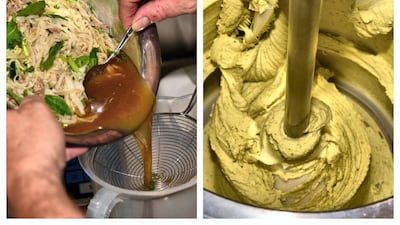Leaning over a counter in his spotless kitchen in Ho Chi Minh City, Ralf Ehresmann, 63, squints through his glasses as he calculates a careful measurement. "It has to be just right or it will taste horrible," he tells me as he pours pho noodle soup through a strainer and into a jug.
This hot, salty broth is the national dish of Vietnam. Pho is sold everywhere from street corners to five-star hotels, and is consumed for breakfast, lunch or dinner.
It is a bit risky, then, for a half-Italian, half-German resident to start experimenting with such a beloved dish. But Ehresmann likes taking risks – that is exactly how he ended up in Asia converting a noodle soup into gelato, a style of iced confection only introduced to Vietnam in recent years.
Ice cream is pandemic-proof
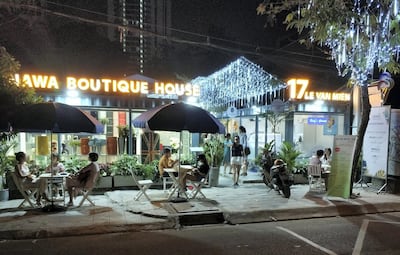
The owner of Ralf’s Artisan Gelato, Ehresmann left behind a corporate career in Europe to earn fame in the populous Vietnamese city by turning local foods, such as pho, nuoc mam fish sauce and black sticky rice, into gelato flavours.
Ehresmann’s curious innovations have been a blessing for him; they’ve helped his business survive the coronavirus pandemic.
Since opening in August 2016, Ralf's has built a loyal Vietnamese clientele. Compared with foreign customers, who prefer Ralf's sweet flavours such as coconut and strawberry, many locals who visit his shop adore his savoury creations, which come infused with a variety of meaty and fishy tastes.
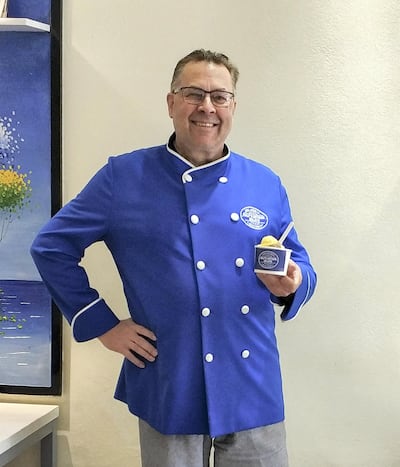
This has meant that, despite international tourists having been absent from Vietnam for nearly a year now, Ralf’s has been able to maintain its key customer base.
In terms of containing the coronavirus, Vietnam has been one of the world's most successful nations. Despite its huge population of almost 100 million people, the country has been less affected by Covid-19, with 6,908 total cases and fewer than 50 deaths, according to data from the John Hopkins University.
This has meant businesses such as Ralf's have been able to operate as usual amid the pandemic, free of the movement restrictions that have been common elsewhere in the world.
"It may sound strange, but the pandemic – which Vietnam has excellently under control – has not noticeably damaged our business so far," Ehresmann says.
“It is almost the opposite [because] I suppose it’s easier to afford the small luxury of a scoop of ice cream than an extended meal in a restaurant.”
Flavour fest at Ralf’s Artisan Gelato
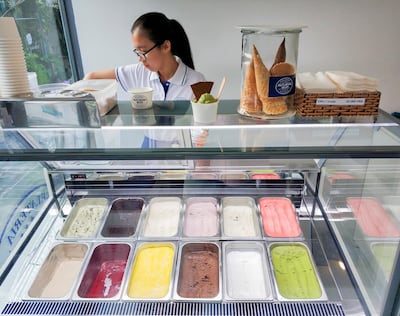
It was before the pandemic that I met Ehresmann in Ho Chi Minh City and learnt how he went from being a public relations executive in Frankfurt to a gelato trailblazer in Vietnam. Since then, Ralf's has moved into a new building in the riverside community of Thao Dien.
Ehresmann creates so many flavours of gelato and sorbet – more than 70 at last count – that they aren't all listed on the menu at Ralf's. His classic gelato varieties include stracciatella, pistachio, vanilla, coffee, tiramisu, chocolate, banana, hazelnut and caramel.
The sorbets, meanwhile, boast a huge variety of fruit infusions, including mango, guava, blackcurrant, redcurrant, passion fruit, kiwi, green apple, raspberry, sour cherry, peach and lemon. Those flavours are complemented by sorbets based on Asian fruits such as soursop, jackfruit, dragon fruit and durian.
In most shops, durian would be the strangest flavour on the menu. With its pungent odour, custard-like texture and the most acquired of tastes, the fruit is a polarising delicacy in Asia. It is banned from many hotels, owing to the stench it creates, but it is so popular it regularly sells for more than 440,000 Vietnamese dong ($19) per kilogram across the continent.
Yet the durian sorbet barely stands out on Ralf's menu, thanks to the presence of many other truly odd flavours. There is a gelato flavoured by tonka bean, a rare black legume from Central America, and tomato with chilli and chive. Curiouser still is the kem than, a gelato flavour that has "activated carbon from coconut shells for teeth whitening".
Above all of these flavours, though, the one most visitors to Ralf’s enquire about is the one that tastes like pho.
Pho ice cream
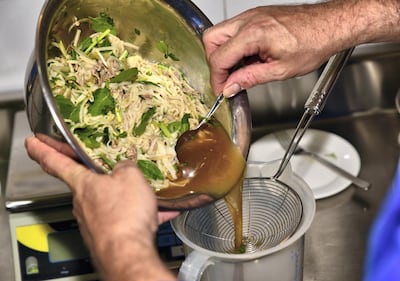
I was so intrigued by how Ehresmann managed to transform a favourite noodle soup into a flavour of gelato that I asked him to whip it up right in front of me.
“I make everything from scratch,” he told me proudly as we stood in his kitchen. “Most gelato shops use pre-mixed ingredients and artificial colours and additives, but that is the lazy way. The traditional way is to use only fresh ingredients, plus the sugar, water, milk or cream.”
As he was explaining this to me, one of his staff darted down the street to a favourite local pho restaurant and returned with a steaming hot beef version.
Ehresmann separated the soup from the noodles, meat and bean sprouts by pouring it through a sieve. He then measured the right amount of sugar and water, mixed that together with the soup and poured it into a vertical ice cream machine to freeze the mixture.
That was it. It seemed simple, really. The trick was in calculating the ingredient proportions exactly.
Passage to Vietnam
It helps, no doubt, that Ehresmann was born and raised in a country world-famous for its precision. Germans are known for being sticklers. Fuse that with the flair and inventiveness of the Italians, and you have a potent blend evident in the work of Ehresmann, who has an Italian mother and a German father.
From the time he was a child, he adored gelato. In 2010, he saw an opportunity to take over a gelato shop in the city of Munich.
Disillusioned with the corporate world and also going through a divorce, he decided to take a risk and switch careers. While running the shop in Munich, Ehresmann attended culinary institutes in Germany and Italy that specialised in training students to make artisanal gelato. Soon after, he met a “wonderful woman online”. She lived in Ho Chi Minh City.
After a few "very positive visits" to Vietnam, he took his next gamble and moved his business to Asia. Nearly five years later, Ehresmann is ensconced in his adopted nation. He spends his days dreaming up quirky new gelato flavours and says nothing makes him happier.
